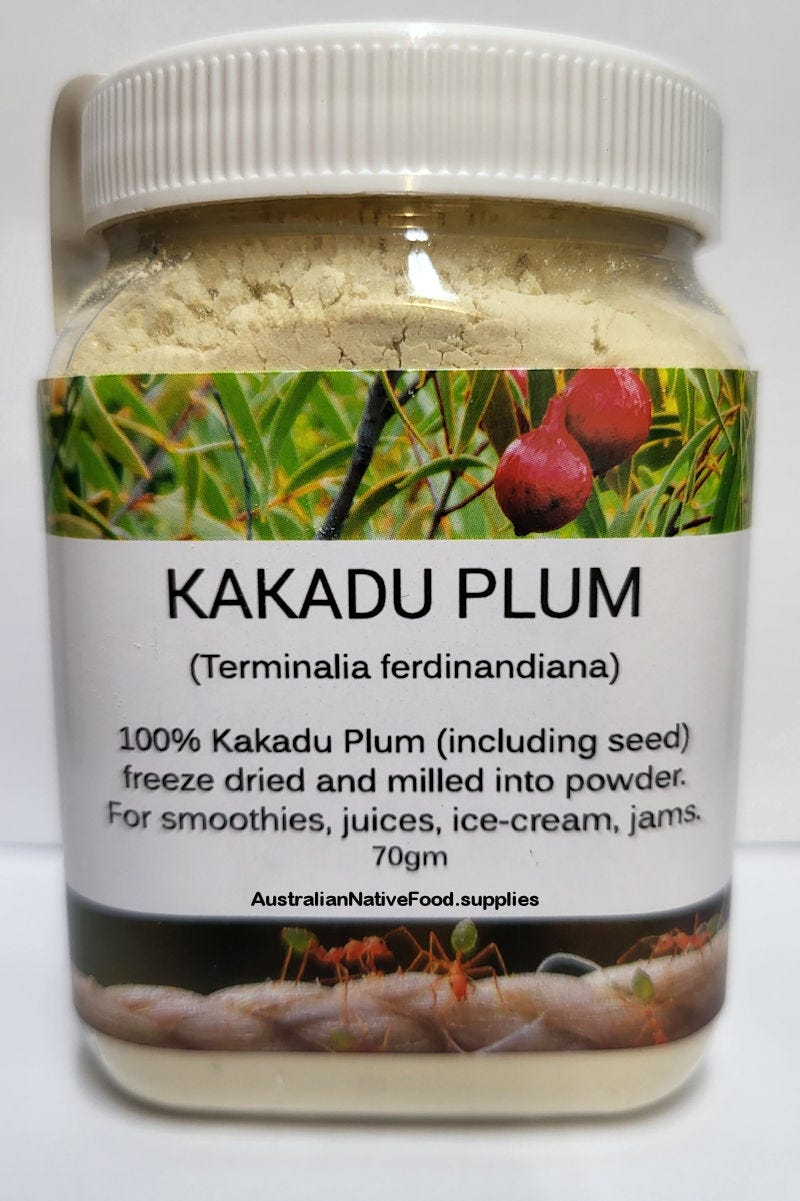Australia's much talked about plum
Rich in magnesium, calcium, iron, zinc, potassium, and manganese
Kakadu Plum (Terminalia Ferdinandiana) thrive in warm, tropical climates, specifically in the Northern Territory, Western Australia and Queensland. Also known as gubinge, madoorr, madoorroo, garbiny, kabinyn , mi maraal / marnybi , nghul nghul, manhmohpan, murunga but colloquially known as “billy goat plum.”
The fruit is small, pale green in colour and tart to taste, with fibrous flesh which clings to a hard stone. Once picked they deteriorate quickly in the tropical heat.
Known for its high vitamin C content, if you are unable to get to the remote growing regions during season then the next best way to take advantage is with the KAKADU PLUM POWDER (freeze dried to preserve the nutrients). Add to smoothies, sprinkle on yoghurt or stir into water.
So, can you grow a tree yourself?
Bearing in mind that the trees grow like weeds in their natural environment but you could give it a go in your location by emulating the types of conditions and situations they love. They are drought and flood-tolerant but sensitive to waterlogged soils meaning they don't like wet feet!
Start by selecting a location that receives full sun for at least 6 to 8 hours daily and offers protection from strong winds and frost.
Test your soil - aim for a pH range of 5.0 and 7.5.
The ideal time to plant is early spring or late autumn.
During the first year, water regularly to help the roots settle in. Once your tree is established, it becomes more drought-tolerant. Apply organic mulch around the base of the tree.
Fertilise in early spring and mid-summer. Prune in late winter or early spring.
Regularly check your tree for signs of stress or nutrient deficiency as well as aphids and root rot.
Kakadu plum trees are common in open tropical woodlands of Kakadu National Park and can be seen from most walking tracks. They are easily recognised by their egg-shaped fruit, large round leaves and spikes of cream-coloured flowers.
One of Kakadu’s few deciduous species, these trees lose their leaves during the dry season. The branches stay bare until they flower in August – October, while the tasty fruits appear towards the end of the tropical summer (March – May).
Kakadu plums are an important food source for the local people who consume the ripe plums raw and use the inner bark of the tree to treat sores and mosquito bites.
Commercially grown Kakadu plums are now used to make a range of modern hair, skin and food products.






